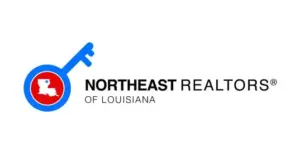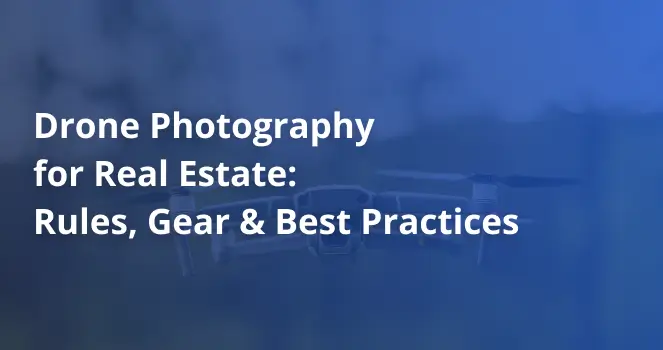Drone photography has quickly moved from being a novelty to a core part of real estate marketing. What once required helicopters or planes can now be done with a compact drone that fits in a backpack.
The results speak for themselves. Homes with aerial shots are far more engaging online, stand out on MLS feeds, and often sell faster than those marketed with ground photos alone. Surveys show that most listing agents already use drone videography, and many buyers now expect to see aerial views when browsing homes.
As an agent, adopting drone photography isn’t just about keeping up; it’s about giving your listings the kind of visual storytelling that today’s clients respond to.
Let’s discuss the benefits, legal requirements, equipment, shooting techniques, editing, and whether to hire professionals or do it yourself.
Benefits of Drone Photography in Real Estate
Drone footage gives buyers a perspective they can’t get from the curb. Instead of relying on a few ground shots, they can see how the house sits on the lot, the expanse of the backyard, or how close it is to the park down the street. Aerial imagery can highlight a pool, new roof, garden, or nearby amenities in a single frame.
This broader perspective creates an emotional impact that static photos rarely match. Buyers aren’t just seeing a structure but a home within its surroundings. That context is especially valuable for larger or scenic properties, but even modest suburban houses gain appeal with a simple overhead shot.
Drone marketing also builds credibility with sellers. It signals that you’re using the latest tools and investing in professional marketing. Listings with video, mainly when they include aerial clips, generate dramatically more inquiries than those without. Homes marketed with polished visuals often sell faster and can command better prices, which gives you a talking point in listing presentations.
Different property types benefit in different ways:
- Residential homes gain curb appeal by showing the whole lot and the neighborhood context.
- Luxury estates can showcase grandeur through sweeping flyovers.
- When buyers can see the scale and boundaries from above, rural and land listings are easier to understand.
- Commercial properties benefit from context shots showing parking, access, and proximity to major roads.
No matter the property, tailoring aerial shots to its strongest features gives buyers a compelling view of what they’re getting.
Regulations and Legal Considerations
Drones are fun to fly, but they’re considered commercial aircraft when used for real estate. That means rules apply, and agents must get or work with licensed pilots. Skipping this step can lead to steep fines and liability issues.
United States
The Federal Aviation Administration (FAA) requires a Part 107 Remote Pilot Certificate for commercial drone work. To qualify, you must be at least 16, pass a knowledge exam, and undergo a background check. Drones over 0.55 pounds must be registered, with the registration number marked on the aircraft.
Operational rules under Part 107 include:
- Maximum altitude of 400 feet above ground.
- The drone must remain within the visual line of sight.
- Restrictions in controlled airspace near airports unless authorized.
- No flying directly over people or moving vehicles unless specific conditions are met.
- Night flights are allowed only with anti-collision lighting and proper training.
Privacy laws also apply. There isn’t a single federal privacy rule, but many states regulate surveillance or filming over private property. For real estate, it’s best practice to avoid flying over neighboring homes or capturing people without consent.
While insurance isn’t federally required, it’s strongly recommended. A drone crash can damage property or injure someone, and liability coverage protects both the pilot and the agent.
Canada
Transport Canada regulates drone operations under the Remotely Piloted Aircraft System (RPAS) framework. Any drone between 250 grams and 25 kilograms must be registered, and operators need certification.
There are two levels of certification:
- Basic Operations: For flights in uncontrolled airspace, at least 30 meters from bystanders, and never over people. Minimum age 14.
- Advanced Operations: This is for controlled airspace or closer flights. It requires a more difficult exam and a flight review, and the minimum age is 16.
Canadian rules mirror the U.S. in many ways: drones must stay under 400 feet, remain in sight, avoid airports, and only fly at night with proper lighting. Penalties for breaking rules can reach $3,000 CAD per violation.
Practical Compliance
Most agents choose to hire licensed drone photographers rather than getting certified themselves. Always verify their license, registration, and insurance if you hire one. If you want to fly your own, invest in training and certification. It demonstrates professionalism and avoids legal headaches.
Either way, courtesy matters. Inform homeowners and neighbors about scheduled flights to avoid privacy complaints. Respecting community expectations is as important as following the letter of the law.
Equipment and Tools
Drones have become more affordable, but not all models are suited for professional real estate work. The right gear ensures you get smooth, high-quality shots that impress clients.
Entry-level drones under $200 are mostly toys. They’re fine for practice but lack the image quality needed for listings. Mid-range models between $200 and $1,000 often come with 4K cameras, GPS stabilization, and flight times of 20–30 minutes.
These are popular among agents starting. High-end drones above $1,000 include larger sensors, longer flight times, and advanced features like obstacle avoidance or interchangeable lenses. They’re often used for luxury or commercial shoots.
When evaluating a drone, camera quality should be a top priority. The minimum sensor size is 12 megapixels; 20 or higher gives better clarity. Shooting in RAW format is useful for editing, and high dynamic range helps balance bright skies with shaded areas.
Accessories are equally important. Extra batteries extend your shooting time, ND filters improve video quality in bright light, and prop guards protect against accidents during interior fly-throughs. A solid carrying case and spare memory cards round out a reliable kit.
Ultimately, you don’t need the most expensive gear. Even mid-range drones can deliver professional results if used correctly. What matters more is mastering your equipment and knowing its limits.
Techniques and Best Practices
Flying a drone is one thing; capturing footage that sells homes is another. Professional-looking shots require planning, timing, and practice.
Start by surveying the property. Identify must-have angles: the front facade, the backyard, key features like a pool, or nearby attractions. Create a shot list so you don’t waste flight time.
Lighting makes a huge difference. Early morning and late afternoon are golden hours that provide soft, flattering light. Midday sun creates harsh shadows, so avoid it when possible. Calm weather is also essential, as wind can destabilize the drone and blur images.
Flight technique should be slow and controlled. Sudden movements look jarring in the video. Many drones have “cine” modes that slow down stick sensitivity for smoother footage. Use them. Keep shots steady and vary altitude to provide context and detail.
Composition follows classic photography rules. Use the rule of thirds, look for leading lines like driveways or fences, and vary your angles. A straight-down view can highlight property lines, while a gentle orbit showcases the home in its setting.
Camera settings matter, too. Use low ISO to reduce noise and set shutter speed appropriately for stills or video. Bracket exposures for HDR when balancing sky and shadows. Shoot in RAW for photos and use your drone’s highest resolution for video.
Finally, don’t forget the surroundings. Buyers aren’t just purchasing a home but buying into a neighborhood. Shots that include nearby lakes, parks, or skylines add context that helps buyers picture the lifestyle.
Post-Production
Editing turns raw drone footage into polished marketing material. Even well-shot photos usually need brightness, contrast, and color balance adjustments.
Straightening horizons, cropping out propeller tips, and correcting skies can make images look professional while still natural.
Video editing requires assembling clips into a logical sequence. A common approach is to start with a wide establishing shot, move into medium views, then finish with a dramatic pull-away. Gentle transitions keep the viewer engaged. Color grading ensures consistency across clips, and stabilization tools can smooth out minor jitters.
Adding background music, captions, or simple graphics can elevate the final product. Labeling nearby amenities or highlighting property lines makes the video attractive and informative. Most listing videos run one to two minutes, long enough to engage but short enough to keep attention.
Hiring a Professional vs DIY
Agents must invest in their own drone setup or hire specialists. Each path has pros and cons.
Hiring professionals
It saves time and reduces liability. Licensed operators know how to capture strong shots, handle editing, and deliver polished media. Typical costs range from $150–300 for photos to $500 or more for video packages. Prices can climb above $1,000 for luxury or commercial properties, but the quality often justifies the investment.
Doing it yourself
It requires certification, equipment, and practice. The upfront cost can be significant, but it pays off if you produce frequent content. DIY allows you to shoot on your schedule but adds responsibility for safety, compliance, and editing.
Hybrid approaches
This also works. Some agents handle simple overhead shots in-house while hiring professionals for high-end listings. This balances cost savings with quality where it matters most.
When evaluating ROI, remember that high-quality visuals help sell a property and attract future listings. Sellers are impressed by agents who offer cutting-edge marketing, and drone footage can set you apart.
Drone photography has become one of the most effective tools in modern real estate marketing. Aerial shots give buyers the context they crave, make listings stand out online, and build credibility with sellers. Whether you hire a professional or get licensed, the key is to treat drone media as an integral part of your marketing strategy, not an afterthought.
Pairing strong visuals with an IDX-integrated website creates a complete digital presence that attracts buyers and delivers results. When listings include immersive visuals and accurate, up-to-date data, they don’t just get views; they generate calls, showings, and offers.
A drone won’t close a deal alone, but it can give you a potent edge. In a market where nearly every buyer starts online, that edge can be the difference between a listing that lingers and one that sells quickly.
Table of Contents







